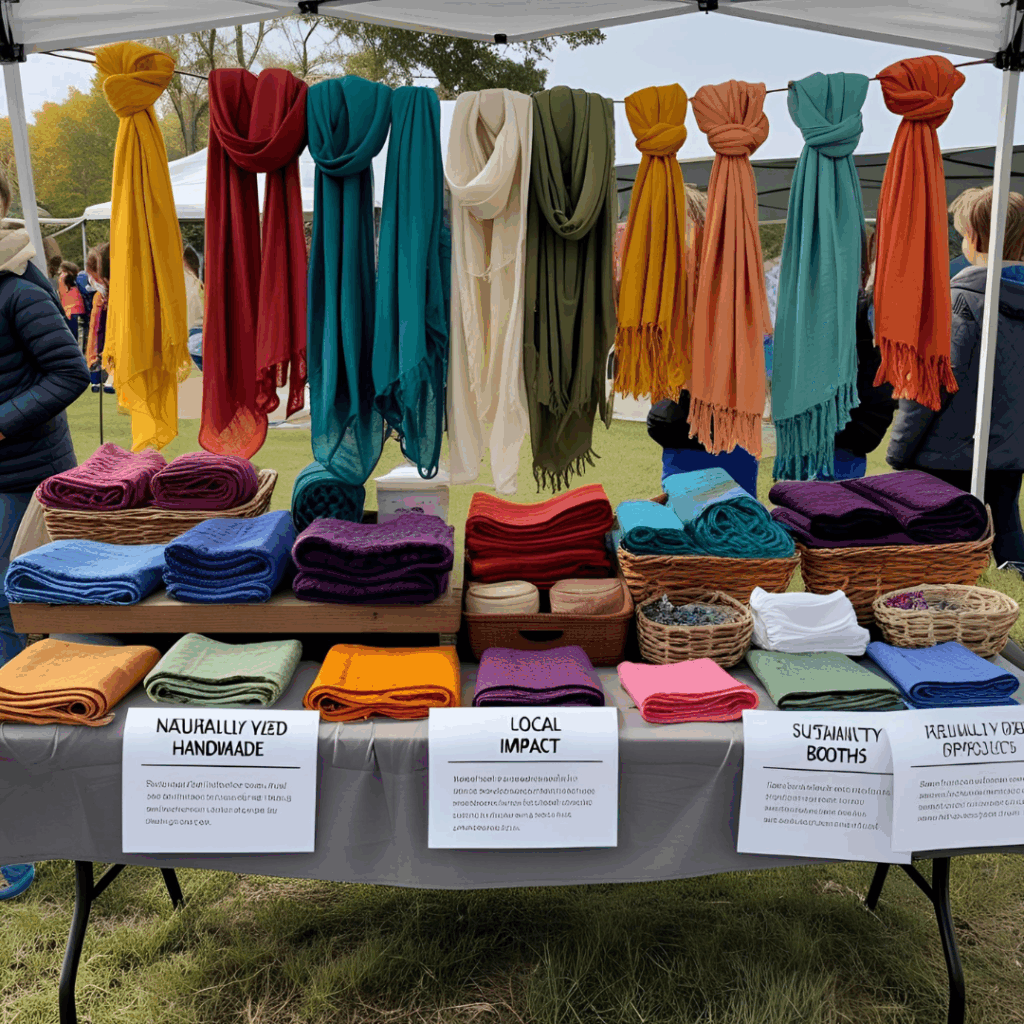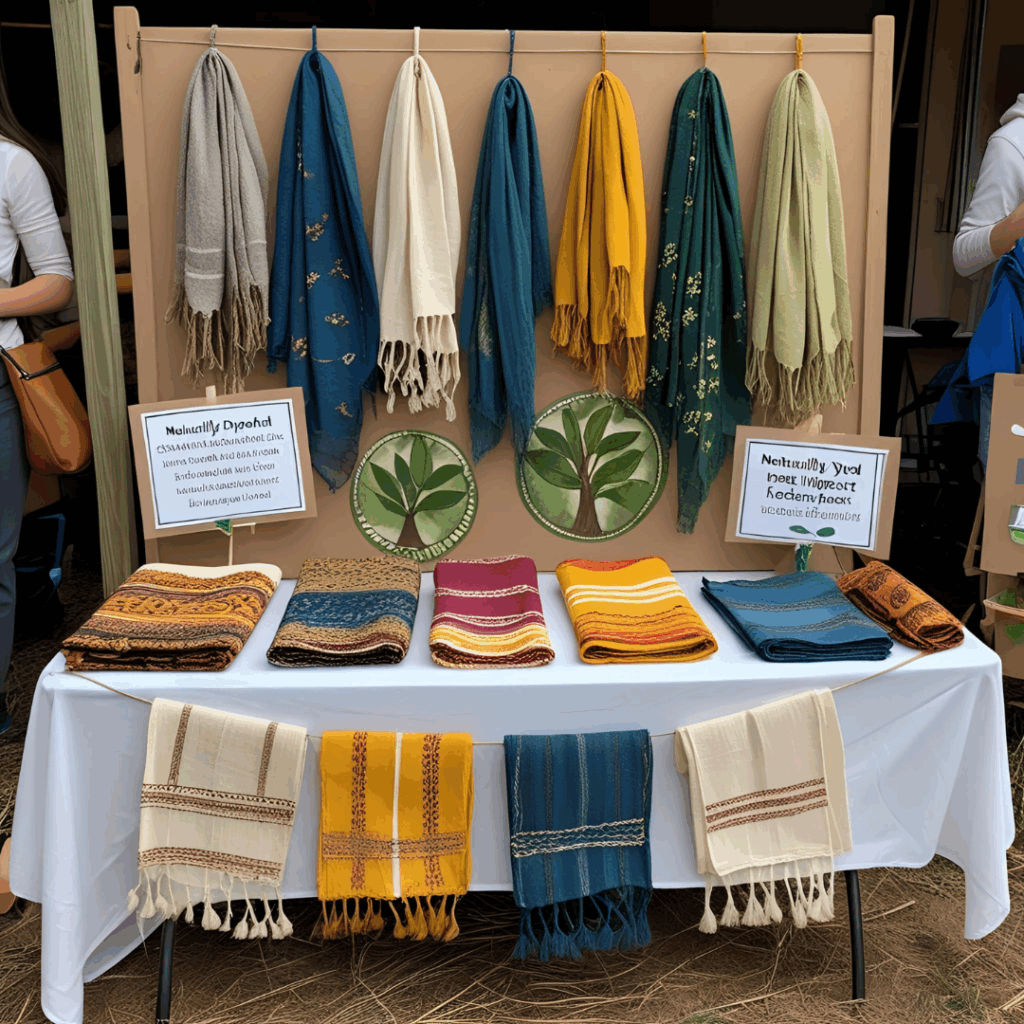The global shift toward sustainability is reshaping not only how we live but also how we learn. Education is no longer confined to traditional classrooms; instead, it’s moving toward hands-on, purpose-driven learning that equips students with practical skills and a sense of community impact. One powerful example of this is the rise of sustainable dyeing workshops — where creativity meets ecology and income generation.
These workshops go beyond art. They create meaningful opportunities for schools, NGOs, and underserved communities to drive local entrepreneurship, financial sustainability, and environmental awareness — all while teaching skills that connect culture, science, and self-expression.
The Power of Creative Education in Action
Traditional education often overlooks creative expression and sustainability. However, creative education — especially when integrated with eco-conscious practices — not only enriches learning but also opens doors to economic empowerment.
Sustainable dyeing, using plant-based pigments such as onion skins, turmeric, and eucalyptus leaves, provides a tangible way to explore science, art, and sustainability in one activity. Whether in rural villages, urban schools, or community centers, these workshops inspire participants to:
- Learn by doing
- Reconnect with nature
- Explore color chemistry and textile arts
- Create sellable, handmade goods
The result? A self-sustaining loop where education fuels economic opportunity, and local economies support educational growth.

Starting a Dyeing Workshop with Purpose and Low Investment
You don’t need industrial equipment or large budgets to begin. That’s what makes sustainable dyeing so accessible and scalable. Many successful projects begin with recycled tools, natural materials, and local collaboration.
Essentials to get started:
- Used pots (not for food use)
- Fabric scraps (cotton, linen, silk)
- Buckets, gloves, tongs
- Organic pigments (turmeric, beetroot, avocado pits, hibiscus)
- Drying lines or racks
Startup cost for schools or NGOs:
🟢 Estimated: $100 to $200 USD to launch a basic workshop
Many communities already have access to these materials or can crowdsource donations, drastically reducing startup costs. This makes it an ideal program for low-income regions, eco-conscious schools, or grant-funded education initiatives.
What Participants Learn — and Why It Matters
Dyeing workshops can be customized to match age groups, academic levels, and community goals. The skills taught blend scientific curiosity, environmental education, cultural heritage, and entrepreneurship.
Key learning outcomes:
- Understanding natural resources and plant-based chemistry
- Reusing materials instead of discarding them
- Promoting zero-waste thinking
- Enhancing self-confidence through art
- Building teamwork through collaborative dyeing sessions
- Exploring micro-entrepreneurship by selling their creations
Participants not only walk away with a beautiful, unique fabric — they gain pride, purpose, and a pathway to financial opportunity.
Selling Handmade Goods: From Workshop to Local Income
One of the most empowering aspects of this model is the ability to sell the dyed products locally or online. Whether run through a school fundraising campaign or a community cooperative, sustainable dyeing can produce a variety of handmade goods:
- Scarves, bandanas, and headwraps
- Tote bags and pencil cases
- Table runners and napkin sets
- Custom-dyed fabric for local seamstresses
Example:
A community workshop with 15 participants creates 30 dyed scarves per month. At $10 each, that’s $300/month in revenue, which can support:
- Educational supplies
- Food programs
- Scholarship funds
- Expansion of the workshop
When repeated regularly, these events become a steady source of income for both the organization and the families involved.
Building Community Brands and Local Empowerment
These workshops do more than teach — they build brands rooted in identity, sustainability, and storytelling. Communities can create their own labels, highlighting:
- Eco-friendly processes
- Cultural influences in patterns and dye choices
- Handcrafted nature of each item
- Social impact with every purchase
Platforms like Etsy, Instagram, or local artisan fairs offer the visibility needed to turn these initiatives into real businesses. A community with its own eco-textile line? Absolutely possible.

Beyond the Money: Social Impact That Lasts
While income is important, the real transformation happens in the community spirit. These projects:
- Empower women and youth
- Create intergenerational knowledge exchange (elders teach, youth create)
- Improve school retention by making learning relevant and fun
- Connect students with nature and ancestral traditions
- Build confidence and leadership
Some programs even grow into larger cooperatives, partnering with other sustainable initiatives like permaculture gardens, upcycling stations, or skill-sharing networks.
Real-World Example: A School Turns Creativity into Income
In Brazil, a public school launched a “Color from Nature” program. With only $150 in donations, they started dyeing cotton napkins using turmeric and hibiscus. The students sold them at a local fair and raised enough money to buy books, art materials, and plant more trees in their schoolyard.
Now, they run dyeing classes twice a month, and parents are joining too — creating a model of education-led entrepreneurship that other schools in the region are replicating.
This kind of success isn’t limited to one country. From Kenya to India to inner-city USA, natural dyeing workshops are sparking change.
How to Launch Your Own Program or Support One
If you’re an educator, nonprofit leader, or creative entrepreneur, here’s how to get started:
- Find a local partner – school, community center, or eco-group
- Source natural materials – food scraps, local plants, old fabrics
- Offer a free pilot session – gauge interest and engagement
- Document the process – photos and testimonials help with funding
- Sell or donate the first batch – show real results
- Apply for microgrants or crowdfunding to grow
Even if you’re not launching your own workshop, you can support existing ones by purchasing their products, donating materials, or helping promote their work.
Let Creativity, Color, and Community Lead the Way
In a world of automation and screen fatigue, sustainable dyeing brings us back to the joy of making something with our hands. It’s colorful, creative, and filled with potential — not only to generate extra income but to transform lives through meaningful, community-led education.
This is the future of green entrepreneurship in education: one scarf, one child, one community at a time.







